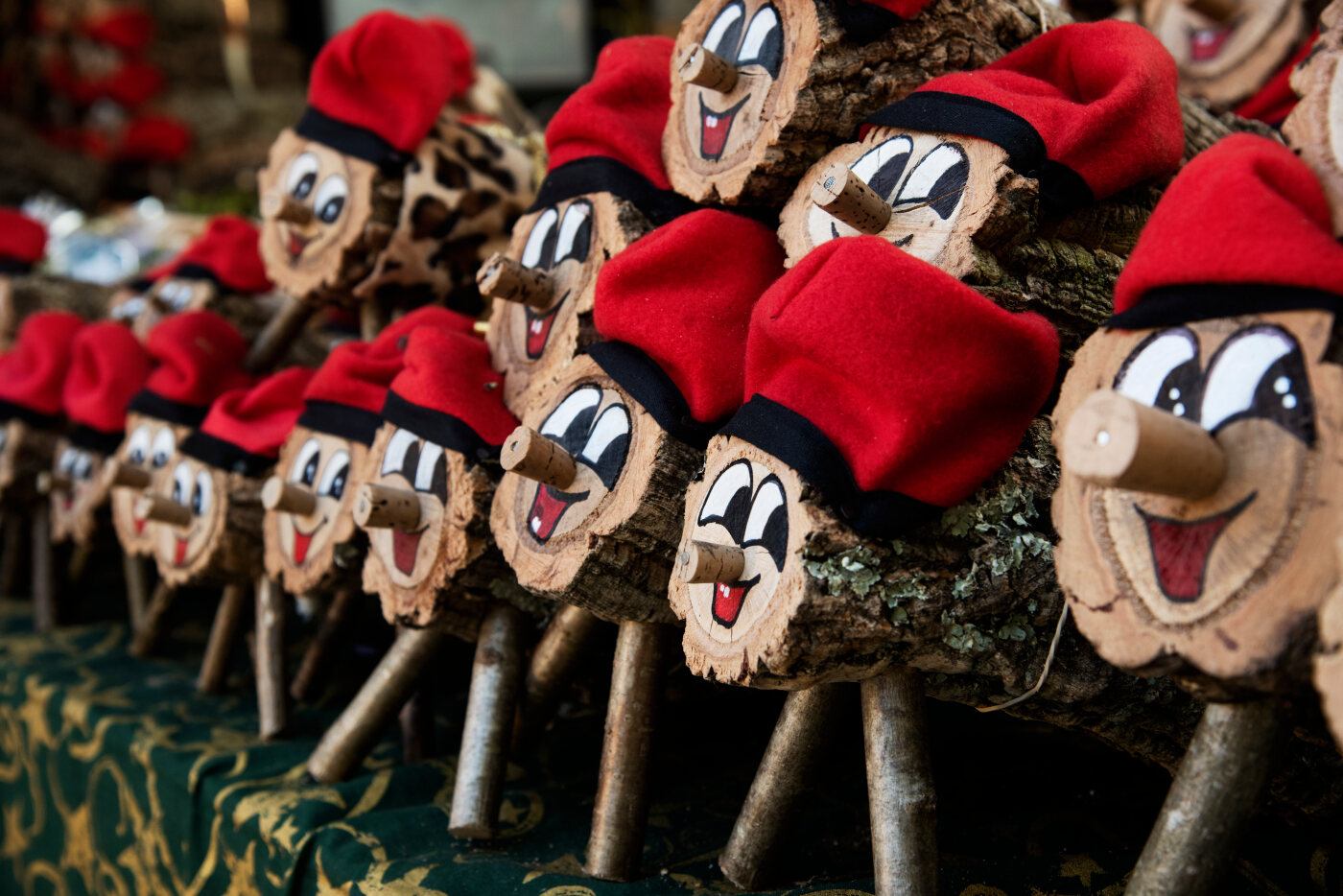The Mystery Of Caga Tió: Why Do Kids Beat Up This Festive Log?

Ever heard of a Christmas tradition where kids beat up a log? In Catalonia, Spain, children eagerly await the arrival of Caga Tió, a festive log with a painted face and a red hat. This quirky custom involves feeding the log every night starting on December 8th. On Christmas Eve, kids sing songs and hit Caga Tió with sticks, hoping it will "poop" out presents and sweets. Sounds strange, right? But this beloved tradition brings families together, blending fun and festivity. Curious about how this log became a holiday favorite? Let's dive into the story behind Caga Tió and its unique place in Catalan culture.
What is Caga Tió?
Caga Tió, also known as the Christmas Log, is a unique Catalan tradition celebrated during Christmas. This festive log, adorned with a painted face and a red hat, brings joy and gifts to children. But why do kids beat up this cheerful log?
The Origins of Caga Tió
Understanding the origins of Caga Tió helps explain why children engage in this peculiar practice. The tradition dates back centuries and has deep roots in Catalan culture.
Ancient Pagan Rituals: Caga Tió's origins can be traced to ancient pagan rituals. Logs were burned to provide warmth and light during the winter solstice, symbolizing the return of the sun.
Agricultural Significance: In rural Catalonia, logs were essential for farming families. They provided heat for cooking and warmth during cold months, making them a symbol of sustenance and survival.
Christian Influence: Over time, the tradition merged with Christian customs. The log became associated with Christmas, representing the nativity and the gifts brought by the Three Wise Men.
How Caga Tió is Celebrated
The celebration of Caga Tió involves several steps, each adding to the excitement and anticipation of the event. Here's how it's done:
Preparing the Log: Families bring Caga Tió into their homes on December 8th, the Feast of the Immaculate Conception. The log is "fed" every night with food scraps until Christmas Eve.
Covering with a Blanket: To keep Caga Tió warm, children cover it with a blanket. This act symbolizes care and nurturing, ensuring the log is ready to "produce" gifts.
Singing the Song: On Christmas Eve, children gather around Caga Tió and sing traditional songs. These songs encourage the log to "poop" out presents, adding a playful element to the ritual.
Beating the Log: After singing, kids use sticks to gently beat the log. This action is believed to help Caga Tió release its gifts, which are hidden under the blanket.
The Symbolism Behind Beating Caga Tió
Beating Caga Tió may seem odd, but it carries significant symbolism. The act represents several important themes in Catalan culture.
Generosity and Sharing: By "feeding" and caring for Caga Tió, children learn the value of generosity. The log's gifts symbolize the rewards of sharing and kindness.
Harvest and Abundance: The beating of the log mimics the act of harvesting. Just as farmers gather crops, children "harvest" gifts from Caga Tió, celebrating abundance and prosperity.
Community and Togetherness: The ritual brings families and communities together. Singing, beating the log, and sharing gifts foster a sense of unity and collective joy.
Modern Adaptations of Caga Tió
While the core tradition remains, modern adaptations have added new dimensions to the celebration. These changes reflect the evolving nature of Catalan culture.
Urban Celebrations: In cities, public events featuring giant Caga Tió logs bring communities together. These events often include music, dancing, and festive markets.
Educational Programs: Schools and cultural centers teach children about the history and significance of Caga Tió. These programs ensure the tradition is passed down to future generations.
Creative Variations: Families add their own twists to the ritual, such as incorporating new songs or using different types of logs. These variations keep the tradition fresh and engaging.
Why Caga Tió Continues to Thrive
Caga Tió's enduring popularity can be attributed to its ability to adapt while preserving its core values. This unique tradition continues to captivate children and adults alike.
Cultural Identity: Caga Tió is a symbol of Catalan identity. Celebrating this tradition reinforces a sense of pride and connection to cultural heritage.
Joy and Wonder: The playful nature of Caga Tió brings joy and wonder to the holiday season. Children eagerly anticipate the log's gifts, creating lasting memories.
Family Bonding: The ritual provides an opportunity for families to bond. Preparing the log, singing songs, and sharing gifts create cherished moments of togetherness.
Caga Tió remains a beloved tradition, blending ancient customs with modern celebrations. Its unique charm and deep cultural significance ensure it will continue to be a cherished part of Catalan Christmas festivities for generations to come.
Embracing the Joy of Caga Tió
Caga Tió is more than just a quirky tradition. It brings families together, sparking joy and laughter. Kids eagerly anticipate the gifts hidden inside the log, making the holiday season even more magical. This unique custom teaches children about the importance of family, sharing, and celebration.
While it may seem odd to outsiders, the tradition holds deep cultural significance in Catalonia. It’s a reminder of the region's rich history and the importance of preserving these customs for future generations.
Next time you hear about Caga Tió, remember it’s not just about beating a log. It’s about the joy, excitement, and togetherness it brings to families. So, if you ever get the chance, join in the fun and experience the magic of Caga Tió for yourself.

